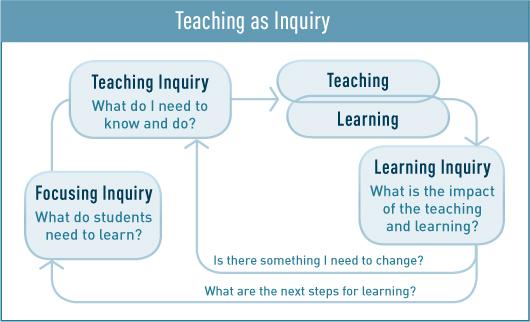Literacy and teaching as inquiry
Teaching as inquiry
Since any teaching strategy works differently in different contexts for different students, effective pedagogy requires that teachers inquire into the impact of their teaching on their students.
Inquiry into the teaching–learning relationship can be visualised as a cyclical process that goes on moment by moment (as teaching takes place), day by day, and over the longer term. In this process, the teacher asks:
Learning about my students' needs
What is important (and therefore worth spending time on), given where my students are at? This focusing inquiry establishes a baseline and a direction. The teacher uses all available information to determine what their students have already learned and what they need to learn next.
Planning for my students' needs
What strategies (evidence-based) are most likely to help my students learn this? In this teaching inquiry, the teacher uses evidence from research and from their own past practice and that of colleagues to plan teaching and learning opportunities aimed at achieving the outcomes prioritised in the focusing inquiry.
Impact of changed practices
What happened as a result of the teaching, and what are the implications for future teaching? In this learning inquiry, the teacher investigates the success of the teaching in terms of the prioritised outcomes, using a range of assessment approaches. They do this both while learning activities are in progress and also as longer-term sequences or units of work come to an end. They then analyse and interpret the information to consider what they should do next.
The New Zealand Curriculum, p. 35.
Published on: 15 Feb 2016


